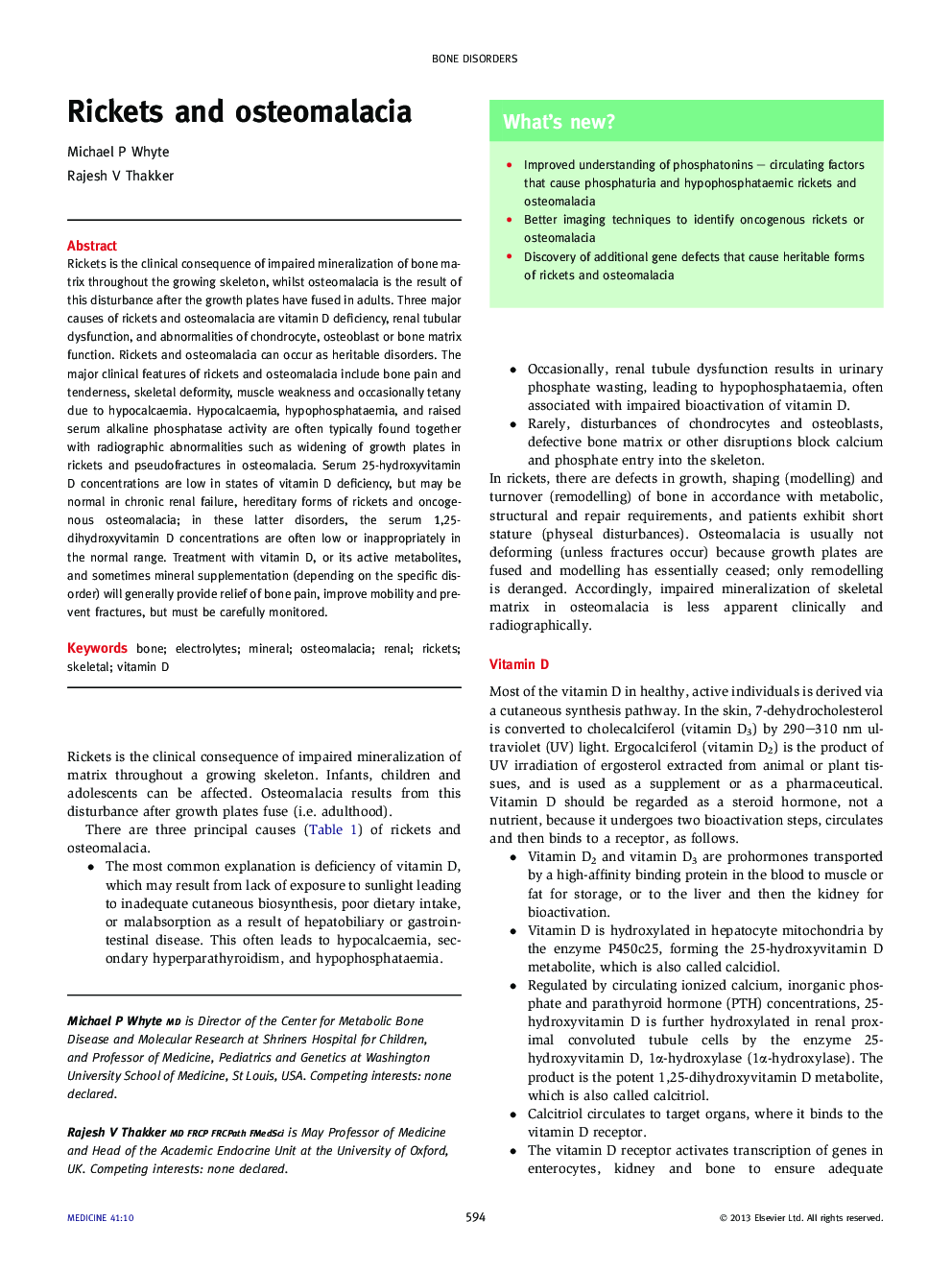| Article ID | Journal | Published Year | Pages | File Type |
|---|---|---|---|---|
| 3803812 | Medicine | 2013 | 6 Pages |
Rickets is the clinical consequence of impaired mineralization of bone matrix throughout the growing skeleton, whilst osteomalacia is the result of this disturbance after the growth plates have fused in adults. Three major causes of rickets and osteomalacia are vitamin D deficiency, renal tubular dysfunction, and abnormalities of chondrocyte, osteoblast or bone matrix function. Rickets and osteomalacia can occur as heritable disorders. The major clinical features of rickets and osteomalacia include bone pain and tenderness, skeletal deformity, muscle weakness and occasionally tetany due to hypocalcaemia. Hypocalcaemia, hypophosphataemia, and raised serum alkaline phosphatase activity are often typically found together with radiographic abnormalities such as widening of growth plates in rickets and pseudofractures in osteomalacia. Serum 25-hydroxyvitamin D concentrations are low in states of vitamin D deficiency, but may be normal in chronic renal failure, hereditary forms of rickets and oncogenous osteomalacia; in these latter disorders, the serum 1,25-dihydroxyvitamin D concentrations are often low or inappropriately in the normal range. Treatment with vitamin D, or its active metabolites, and sometimes mineral supplementation (depending on the specific disorder) will generally provide relief of bone pain, improve mobility and prevent fractures, but must be carefully monitored.
